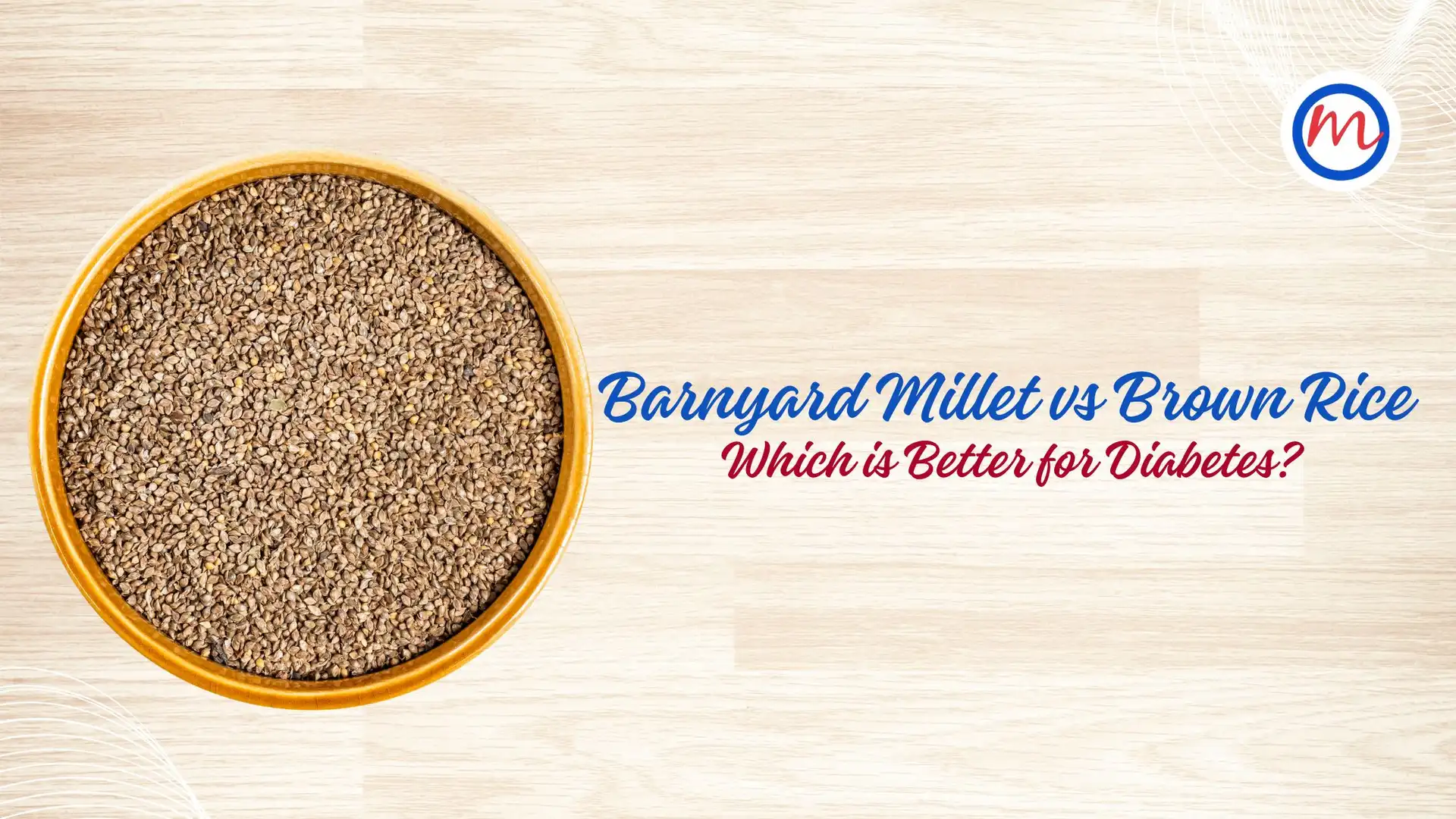Barnyard Millet (Kudhiravali) vs. Brown Rice: Which is Better for Diabetes?
Diabetes is increasingly becoming a health challenge in India, affecting a vast population across various age groups. Managing blood sugar levels is essential for individuals with diabetes, and diet plays a significant role in this process. Among the staple grains available in our country, two contenders stand out — Barnyard Millet (Kudhiravali) and Brown Rice. Both are nutrient-rich, but how do they compare in terms of their benefits for diabetes management? Let’s explore.
What is Barnyard Millet (Kudhiravali)?
Barnyard Millet, known as “Kudhiravali” in Tamil, is a traditional millet cultivated in India. It is gluten-free, packed with dietary fibre, and rich in essential minerals like iron, magnesium, and phosphorus. This ancient grain has gained popularity among health-conscious individuals due to its impressive nutritional profile.
Nutritional Benefits of Barnyard Millet
Kudhiravali is a powerhouse of fibre, aiding digestion and promoting a feeling of fullness. This can help in weight management, which is crucial for individuals with diabetes. Its low glycaemic index (GI) ensures a slow and steady release of glucose, helping maintain stable blood sugar levels. Additionally, it is gluten-free, making it a suitable option for individuals with gluten intolerance.
Impact on Blood Sugar Levels
Barnyard Millet’s low GI plays a pivotal role in controlling blood sugar spikes. Unlike polished rice, which can cause a rapid increase in glucose levels, Kudhiravali releases glucose gradually, offering better control over post-meal sugar levels. This gradual release can help reduce cravings, making it easier for people with diabetes to adhere to their dietary plans.
What is Brown Rice?
Brown Rice is a whole grain that retains its bran and germ layers, making it more nutritious than white rice. It is a rich source of B vitamins, magnesium, and antioxidants. Popular among health-conscious individuals, Brown Rice is considered a healthier alternative to white rice.
Nutritional Benefits of Brown Rice
Brown Rice is a good source of dietary fibre, which aids digestion and promotes a feeling of fullness. It provides essential nutrients like magnesium, phosphorus, and selenium, contributing to overall health. Its moderate glycaemic index makes it a better option than white rice for maintaining stable blood sugar levels.
Impact on Blood Sugar Levels
While Brown Rice has a lower GI than white rice, its GI is still higher than that of Barnyard Millet. As a result, it may lead to quicker spikes in blood sugar levels if consumed in larger portions. For individuals with diabetes, portion control is essential when including Brown Rice in their meals.
Comparing Barnyard Millet and Brown Rice for Diabetes Management
When it comes to managing diabetes, the glycaemic index and fibre content of these grains play a significant role. Barnyard Millet, with its lower GI and higher fibre content, tends to be more effective in stabilising blood sugar levels compared to Brown Rice. However, Brown Rice offers its own nutritional benefits, especially for those who prefer the texture and taste of rice in their meals.
Key Differences:
- Glycaemic Index: Barnyard Millet has a lower GI, making it better for blood sugar control.
- Fibre Content: Kudhiravali is richer in fibre, aiding digestion and weight management.
- Nutrient Profile: Brown Rice is a good source of B vitamins and antioxidants, while Barnyard Millet is rich in essential minerals like iron and magnesium.
Other Factors to Consider
- Availability: While Brown Rice is widely available in most supermarkets, Barnyard Millet may require sourcing from local organic stores or millet-speciality shops.
- Taste and Texture: Brown Rice has a familiar taste and texture, while Barnyard Millet may take some time to get used to for those accustomed to polished rice.
- Affordability: Barnyard Millet can be cost-effective when sourced locally, making it a practical choice for Indian households.
Conclusion: Which is Better for Diabetes Management?
Both Barnyard Millet (Kudhiravali) and Brown Rice have their unique advantages, but when it comes to managing diabetes, Kudhiravali appears to have an edge due to its lower glycaemic index, higher fibre content, and ability to maintain stable blood sugar levels. However, the choice ultimately depends on individual preferences, dietary needs, and accessibility.
Incorporating a variety of whole grains in your diet while practising portion control can contribute to better diabetes management. Consulting a healthcare professional or a dietitian before making significant dietary changes is always recommended.



